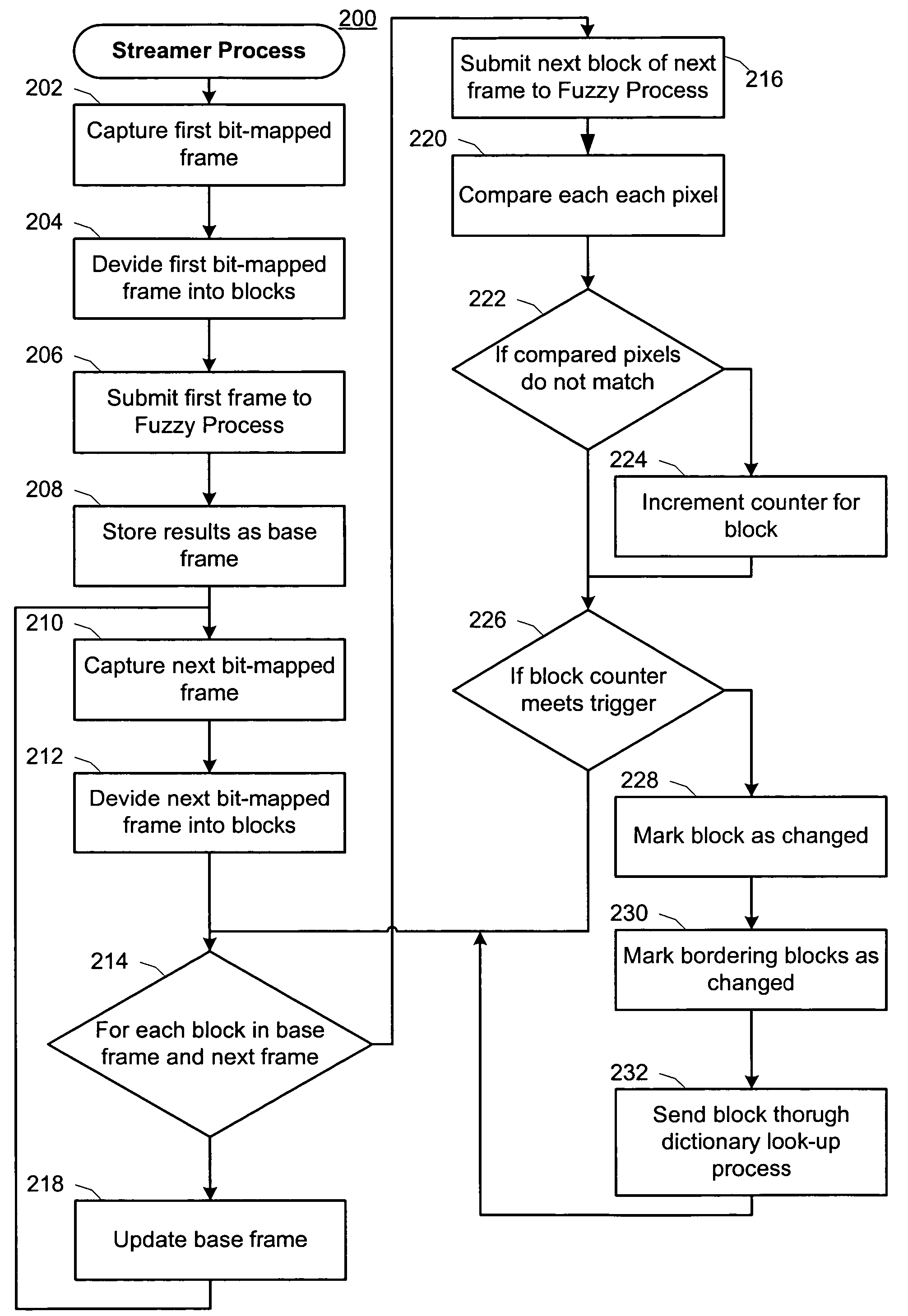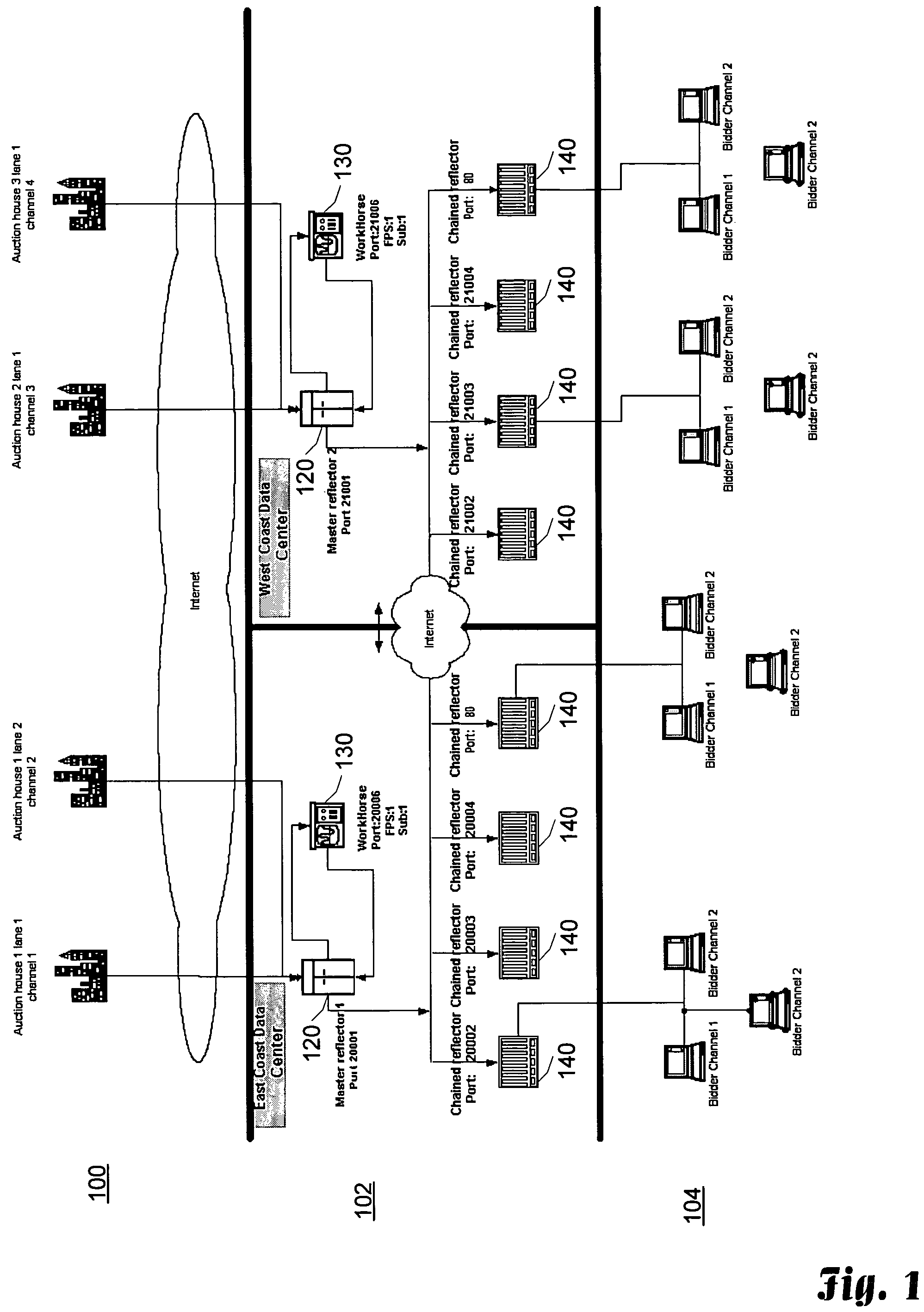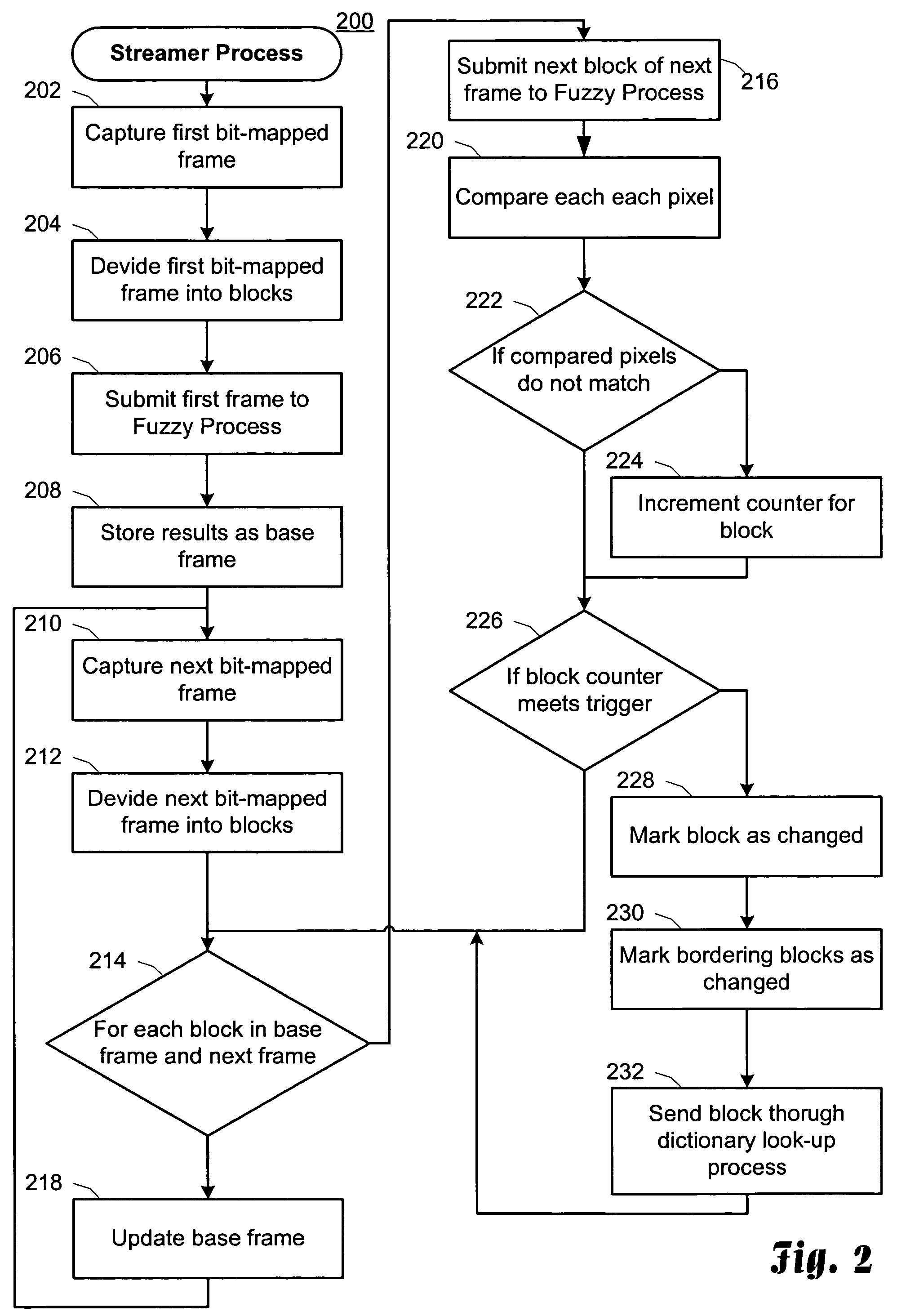Real-time and bandwidth efficient capture and delivery of live video to multiple destinations
a technology of live video and real-time bandwidth, applied in the field of video content delivery, can solve the problems of increasing probability, loss, damage or delay of data packets containing portions of audio or video signals, and reducing the amount of data required to represent audio or video signals
- Summary
- Abstract
- Description
- Claims
- Application Information
AI Technical Summary
Benefits of technology
Problems solved by technology
Method used
Image
Examples
Embodiment Construction
[0024]The present invention provides a solution for the provision of real-time video over the Internet in a bandwidth efficient manner. More specifically, the aspects of the present invention operate to encode and compress video data in a manner to greatly reduce the amount of data that needs to be delivered for the provision of real-time video. The aspects of the present invention provide a single high-quality feed of the video data to a distribution network. The distribution network operates to further alter the characteristics of the video data streams to provide high-quality or lesser-quality video feeds to client devices as requested.
[0025]Advantageously, the present invention allows real-time delivery of video data over the Internet in a bandwidth efficient manner without the need for buffering on the client side.
[0026]For illustrative purposes only, the present invention is described as being embodied within a real-time, distributed live auction scenario. This scenario is an ...
PUM
 Login to View More
Login to View More Abstract
Description
Claims
Application Information
 Login to View More
Login to View More - R&D
- Intellectual Property
- Life Sciences
- Materials
- Tech Scout
- Unparalleled Data Quality
- Higher Quality Content
- 60% Fewer Hallucinations
Browse by: Latest US Patents, China's latest patents, Technical Efficacy Thesaurus, Application Domain, Technology Topic, Popular Technical Reports.
© 2025 PatSnap. All rights reserved.Legal|Privacy policy|Modern Slavery Act Transparency Statement|Sitemap|About US| Contact US: help@patsnap.com



